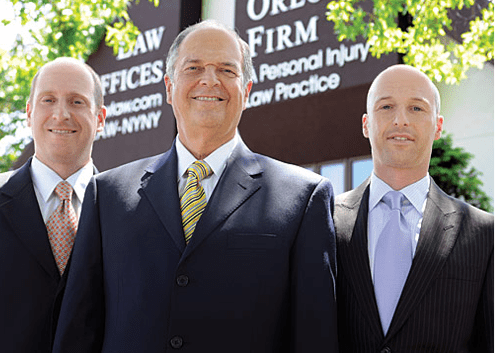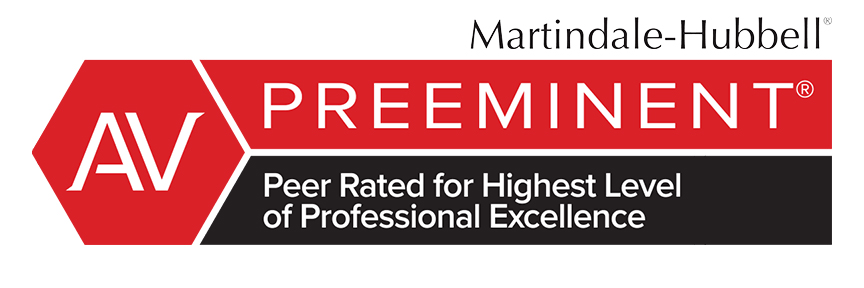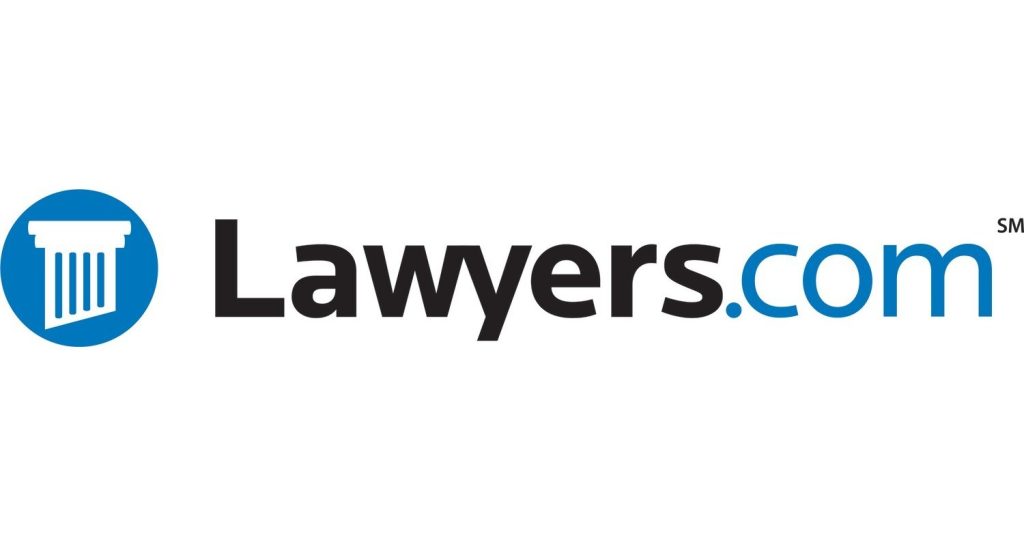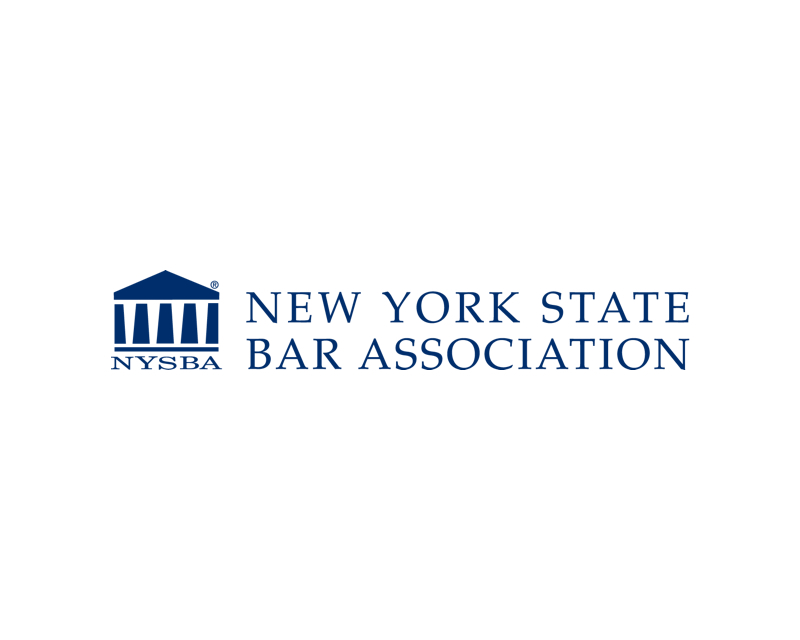Can You Sue a Driver After an Accident in New York?
Quick Answer: Yes, you can sue a driver after an accident in New York if their negligence caused your injury. You must file your claim within the state’s time limits, usually within three years. It’s important to gather evidence and understand your rights to pursue compensation.
When Is It Possible to File a Lawsuit Against a Driver in New York?
In New York, you can file a lawsuit against a driver after an accident, but only under certain conditions. The state has a no-fault insurance system, which means your own insurance usually pays for your medical bills and lost wages first, regardless of who caused the crash. Because of this, you cannot sue the other driver for minor injuries right away.
Here are the main situations when it is possible to file a lawsuit against a driver in New York:
- Serious Injury Threshold: You can sue if your injuries meet New York’s legal definition of a “serious injury.” This includes things like broken bones, significant disfigurement, permanent disability, or injuries that keep you from doing your normal activities for at least 90 days within 180 days after the accident.
- Wrongful Death: If the accident caused someone’s death, the victim’s family may file a wrongful death lawsuit against the at-fault driver.
- Out-of-State Accidents: If the accident happened outside New York, the laws of that state may apply, which could affect your right to sue.
- Motorcycle Accidents: Motorcyclists are not covered by New York’s no-fault insurance. This means they can sue the at-fault driver regardless of injury severity.
- Driving Under the Influence (DUI): If the other driver was intoxicated, you might have additional legal options beyond the no-fault system.
It is important to understand that the no-fault system limits lawsuits for minor injuries to reduce court cases and speed up compensation for medical bills and lost wages. However, if your injuries are serious enough, filing a lawsuit can help you recover additional damages, such as pain and suffering or long-term care costs.
In busy NYC traffic, accidents can involve complex factors like multiple vehicles or unclear fault. Before deciding to sue, it is helpful to gather evidence, such as police reports, medical records, and witness statements. This evidence supports your claim that the other driver was responsible for the accident.
If you believe your injuries qualify or you have questions about your legal rights, contacting a personal injury attorney can provide guidance. The Orlow Firm can help you understand when it is possible to file a lawsuit and what steps to take next. Call us at (646) 647-3398 for a confidential discussion about your case.
Understanding Negligence in New York Car Accident Claims
In New York car accident claims, negligence is the key legal concept used to determine if a driver can be held responsible for causing an accident. Negligence means that a driver failed to act with reasonable care, which led to the crash and the injuries suffered.
To prove negligence in a New York car accident case, you generally need to show four things:
- Duty of Care: Every driver has a legal duty to drive safely and follow traffic laws. This means they must act in a way that a careful driver would under similar conditions.
- Breach of Duty: The driver did something wrong or failed to do something required by law. Examples include running a red light, speeding, or distracted driving.
- Causation: The driver’s breach of duty directly caused the accident. In other words, the accident would not have happened if the driver had acted responsibly.
- Damages: You suffered actual harm, such as physical injuries, property damage, or financial losses, because of the accident.
In New York City, where traffic is heavy and roads are busy, proving negligence may involve gathering evidence like police reports, witness statements, traffic camera footage, and medical records. These help show exactly how the accident happened and who was at fault.
It is important to understand that New York follows a comparative negligence rule. This means if you were partly at fault for the accident, your compensation may be reduced by your percentage of fault. For example, if you were 20% responsible and the other driver was 80%, your damages award could be lowered by 20%.
Negligence is the foundation for filing a lawsuit against a driver after an accident. However, because New York is a no-fault state, you can only sue for damages beyond your no-fault insurance benefits if your injuries meet the state’s “serious injury” threshold. This rule limits lawsuits to more severe cases, but negligence still must be proven to hold the other driver liable.
Understanding negligence helps you know what you need to show to pursue a claim after a car accident in New York City. If you believe another driver’s careless actions caused your injuries, it is important to collect evidence and seek legal advice to protect your rights.
How New York’s No-Fault Insurance Law Affects Your Ability to Sue
New York’s no-fault insurance law plays a key role in how you can sue a driver after a car accident. Under this law, your own insurance company pays for your medical bills and certain other losses, no matter who caused the crash. This system is meant to provide quick help so you can get medical care and cover some expenses without waiting for a court case.
However, the no-fault law also limits when you can sue the at-fault driver for additional damages like pain and suffering. In most cases, you cannot file a lawsuit unless your injuries meet New York’s “serious injury” standard. This means your injury must be significant, such as a broken bone, permanent disfigurement, or a long-term loss of use of a body part.
Here are some important points about how no-fault insurance affects your ability to sue in New York City:
- Immediate Coverage: Your own insurance covers medical bills and lost wages up to $50,000 per person, regardless of fault.
- Limited Lawsuits: You can only sue the other driver if your injuries are serious enough under state law.
- Minor Injuries: For minor injuries, the no-fault benefits are usually the only compensation available.
- Serious Injury Threshold: To sue, your injury must fall into categories like fractures, significant disfigurement, or permanent disability.
- Exceptions: Some cases, like those involving uninsured drivers or motorcycle accidents, may have different rules.
For example, if you are involved in a fender-bender in Manhattan and suffer only minor bruises, your medical bills and lost wages would be covered by your own insurance. You would generally not be able to sue the other driver for pain and suffering. But if you break a bone or suffer a permanent injury in the accident, you may have the right to file a personal injury lawsuit to seek additional damages.
It’s also important to report the accident to your insurance company quickly to ensure your no-fault benefits are paid. Failing to do so could hurt your claim. Keep in mind that no-fault insurance does not cover vehicle damage or pain and suffering, which may require separate claims.
Understanding New York’s no-fault insurance law can be complex, especially in a busy city like New York where accidents happen often. If you have questions about your rights or whether you can sue a driver after an accident, contacting a personal injury attorney can help you navigate the rules and protect your interests. For assistance, you can reach The Orlow Firm at (646) 647-3398.
Common Types of Damages You Can Claim After a Car Accident
After a car accident in New York City, you may be able to claim different types of damages to help cover your losses. These damages are amounts of money that compensate you for the harm you suffered because of the accident. Understanding the common types of damages can help you know what to expect if you decide to sue the driver responsible.
Economic damages are financial losses that you can prove with bills or receipts. These include:
- Medical Expenses: Costs for hospital stays, doctor visits, surgeries, physical therapy, medication, and medical equipment.
- Lost Wages: Money you lose if your injuries keep you from working, including future lost income if you cannot return to your job.
- Property Damage: Expenses to repair or replace your vehicle or other personal belongings damaged in the accident.
- Other Out-of-Pocket Costs: This can include transportation to medical appointments or hiring help for daily tasks you cannot perform due to your injuries.
Non-economic damages cover harms that are harder to measure with bills. These are meant to compensate for the pain and suffering caused by the accident. Examples include:
- Pain and Suffering: Physical pain and emotional distress caused by your injuries.
- Loss of Enjoyment: If your injuries prevent you from enjoying activities you once loved, such as hobbies or social events.
- Emotional Distress: Anxiety, depression, or trauma resulting from the accident.
In New York, you can only sue for non-economic damages if your injuries meet the state’s “serious injury” threshold. This means your injury must be significant, such as a broken bone, permanent disfigurement, or a long-lasting disability.
Punitive damages are rare and meant to punish a driver who acted with extreme carelessness or intentional harm. These damages go beyond compensating you and are awarded to discourage similar behavior in the future.
If you are married or in a close relationship, your spouse or partner may claim damages for the loss of companionship, affection, or support due to your injuries.
Knowing these common types of damages can help you understand what compensation might be available after a car accident in New York City. If you have questions about your specific situation, consider contacting The Orlow Firm at (646) 647-3398 for guidance on your legal options.
Important Deadlines: Statute of Limitations for Car Accident Lawsuits in NYC
In New York City, if you want to sue a driver after a car accident, it is important to act quickly because of the statute of limitations. The statute of limitations is a legal deadline that limits how long you have to file a lawsuit. If you miss this deadline, the court will likely refuse to hear your case, and you will lose your chance to seek compensation.
For most car accident personal injury claims in New York, the statute of limitations is three years from the date of the accident. This means you generally have three years to file a lawsuit against the driver who caused the crash.
Here are some key points to keep in mind about these deadlines in NYC:
- Accident Date Matters: The clock starts ticking on the day the accident happened, not when you discover your injury.
- Exceptions May Apply: In some cases, the time limit may be shorter or longer. For example, if the injured person is a minor, the deadline may be extended.
- Property Damage Claims: If you only want to sue for damage to your vehicle or belongings, the statute of limitations is usually three years as well.
- Wrongful Death Claims: If a loved one dies in a car accident, the family typically has from the date of death to file a wrongful death lawsuit.
It is also important to note that New York’s no-fault insurance system requires you to file a claim with your own insurance company first. This claim must be made promptly, usually within 30 days of the accident, to avoid losing your no-fault benefits for medical expenses and lost wages.
Missing the statute of limitations deadline can prevent you from recovering damages for your injuries, medical bills, lost income, and pain and suffering. Because these time limits are strict and can be affected by many factors, it is a good idea to seek legal advice as soon as possible after an accident.
If you have been injured in a car accident in New York City, contacting The Orlow Firm at (646) 647-3398 can help you understand the deadlines that apply to your case and protect your right to sue within the required time.
Steps to Take Immediately After a Car Accident in New York City
After a car accident in New York City, taking the right steps immediately can protect your health and your legal rights. Here is a clear guide on what to do right after a crash:
- Ensure Safety and Check for Injuries: First, check yourself and others for injuries. If anyone is hurt, call 911 right away to get medical help. If it’s safe, move your vehicle out of traffic to avoid further accidents.
- Call the Police: Even for minor accidents, it’s important to report the crash to the police in NYC. The police will create an official accident report, which is important for insurance claims and any possible lawsuits.
- Exchange Information with the Other Driver(s): Get the full name, address, phone number, driver’s license number, and insurance details from all drivers involved. Also note the vehicle registration numbers and the make, model, and color of each car.
- Document the Scene: Use your phone or a camera to take clear photos of the accident scene. Capture damage to all vehicles, any skid marks, road signs, traffic signals, and your own injuries. Write down the time, date, and location of the accident.
- Gather Witness Information: If there are any witnesses, ask for their names and contact information. Their statements can be helpful if there is a dispute about what happened.
- Seek Medical Attention Promptly: Even if you feel okay, some injuries might not show symptoms immediately. Getting checked by a doctor helps protect your health and creates a medical record that may be important if you decide to sue later.
- Notify Your Insurance Company: Report the accident to your insurance company as soon as possible. In New York, you typically have 30 days to file a no-fault insurance claim. Prompt reporting helps avoid delays or denial of benefits.
- Keep All Records: Save copies of the police report, medical bills, repair estimates, and any communication with insurance companies. Organized records will support your claim and any potential lawsuit.
- Avoid Admitting Fault or Making Statements: Be careful not to admit fault or apologize at the scene, as this could be used against you later. Stick to the facts when talking to police and insurance representatives.
Following these steps can help protect your rights if you decide to sue a driver after an accident in New York City. If you have questions about what to do next or need help understanding your legal options, contact The Orlow Firm at (646) 647-3398 for guidance.
How to Prove Fault in a New York Car Accident Case
Proving fault in a New York car accident case is a critical step if you want to sue the other driver. Fault means that the other driver was responsible for causing the accident through careless or reckless behavior. To succeed in your claim, you must show clear evidence that the other driver was negligent.
Here are key ways to prove fault in a New York car accident case:
- Gather Police Reports: In New York City, police usually respond to car accidents and write an official report. This report often includes the officer’s opinion on who caused the crash based on witness statements and evidence. The police report can be a strong piece of evidence to show fault.
- Collect Witness Statements: Statements from people who saw the accident can help prove what happened. Witnesses can describe the other driver’s actions, such as running a red light or failing to yield. Get their names and contact information if possible.
- Take Photos and Videos: Immediately after the accident, take pictures of the scene, vehicle damage, skid marks, traffic signals, and road conditions. These visuals can help show how the accident occurred and support your claim that the other driver was at fault.
- Review Traffic Camera or Surveillance Footage: In NYC, many intersections have traffic cameras. Nearby businesses might have security cameras that recorded the accident. This footage can provide clear proof of the other driver’s negligence.
- Obtain Medical Records: Your medical records show the injuries caused by the accident. Linking your injuries to the crash supports your claim that the other driver’s fault led to your harm.
- Use Expert Analysis: Sometimes accident reconstruction experts can be hired to analyze the scene, vehicle damage, and other evidence. They can provide professional opinions on how the accident happened and who was at fault.
In New York, fault is based on negligence. Negligence means the other driver failed to act with reasonable care. Examples include:
- Running a red light or stop sign
- Speeding or reckless driving
- Distracted driving, such as texting while driving
- Driving under the influence of alcohol or drugs
- Failing to yield the right of way
It is important to remember that New York follows a comparative negligence rule. This means fault can be shared between drivers. Even if you were partly at fault, you may still recover damages, but your compensation will be reduced by your percentage of fault.
To build a strong case, start collecting evidence right after the accident. Keep detailed records and document everything related to the crash. Working with a personal injury attorney can help you understand what evidence is most important and how to use it to prove fault effectively.
If you have questions about proving fault after a car accident in New York City, contact The Orlow Firm at (646) 647-3398 for guidance on your legal options.
What to Expect During the Lawsuit Process in New York
Filing a lawsuit after a car accident in New York involves several key steps. Understanding what to expect during the lawsuit process can help you prepare and make informed decisions.
1. Filing the Complaint
The lawsuit begins when your attorney files a legal document called a complaint. This document explains your claims against the at-fault driver and what damages you seek. The complaint is then served to the other party, officially notifying them of the lawsuit.
2. The Response
After receiving the complaint, the defendant (the driver you are suing) has a limited time to respond. They may admit or deny the allegations. Sometimes, they may file motions to dismiss the case if they believe it lacks legal grounds.
3. Discovery Phase
Discovery is the process where both sides exchange information and evidence. This can include:
- Written Questions (Interrogatories): Each side answers written questions under oath.
- Document Requests: Parties request relevant documents like medical records or police reports.
- Depositions: Witnesses and parties give sworn testimony outside of court, recorded by a court reporter.
Discovery helps both sides understand the facts and build their cases.
4. Settlement Discussions
Many car accident lawsuits settle before going to trial. Settlement means both sides agree on compensation without a judge or jury deciding. Your attorney may negotiate with the other side or their insurance company to reach a fair settlement.
5. Trial
If no settlement is reached, the case proceeds to trial. Trials involve presenting evidence and witness testimony before a judge or jury. After hearing both sides, the judge or jury decides who is at fault and what damages should be awarded.
6. Judgment and Appeals
Once the trial ends, a judgment is entered. If either side disagrees with the decision, they may have the right to appeal to a higher court. Appeals focus on legal errors made during the trial rather than re-examining the facts.
Additional Considerations in New York City
Car accident cases in New York City often involve complexities such as multiple parties, city traffic laws, and insurance issues. The city’s busy streets and high traffic volume can affect how fault is determined and how damages are calculated.
Timeline and Patience
The lawsuit process can take months or even years, depending on the case’s complexity and court schedules. It’s important to be patient and stay in communication with your attorney throughout the process.
If you are considering suing a driver after an accident in New York, knowing these steps can help you understand what lies ahead. For guidance tailored to your situation, you may want to contact The Orlow Firm at (646) 647-3398 to discuss your options.
Can You Sue a Driver Who Was Uninsured or Underinsured?
Yes, you can sue a driver who was uninsured or underinsured after an accident in New York, but there are important details to understand. In New York City, many drivers carry insurance as required by law. However, some drivers may not have any insurance (uninsured), or their insurance coverage may be too low to fully cover your damages (underinsured). In these cases, you still have legal options to seek compensation.
Suing an Uninsured Driver
If the at-fault driver does not have insurance, you can file a lawsuit against them directly to recover damages. This means you are asking the court to make the driver pay for your injuries, medical bills, lost wages, and other losses caused by the accident. However, collecting money from an uninsured driver can be challenging if they do not have enough assets or income to pay a judgment.
Suing an Underinsured Driver
If the driver has insurance but their policy limits are too low to cover all your damages, you may sue the driver for the amount beyond their insurance coverage. For example, if your damages total $100,000 but the driver’s insurance only covers $25,000, you can pursue the remaining $75,000 through a lawsuit against the driver personally.
Using Your Own Insurance: Uninsured/Underinsured Motorist Coverage
New York law requires drivers to carry uninsured/underinsured motorist (UM/UIM) coverage as part of their auto insurance policy. This coverage helps protect you if the at-fault driver lacks sufficient insurance. UM/UIM coverage can pay for your medical expenses, lost wages, and other damages up to your policy limits when the other driver cannot fully compensate you.
This means, before or alongside suing the uninsured or underinsured driver, you can file a claim with your own insurance company under your UM/UIM coverage. This can provide quicker financial help while you consider legal action.
Important Considerations in NYC
- Proof of fault: To sue an uninsured or underinsured driver, you must prove they caused the accident through negligence or wrongdoing.
- Serious injury threshold: New York’s no-fault law limits lawsuits for minor injuries. To sue for pain and suffering, your injuries must meet the state’s “serious injury” standard.
- Financial ability to pay: Even if you win a lawsuit, collecting money from an uninsured driver without assets can be difficult.
- Statute of limitations: You must file your lawsuit within three years from the date of the accident.
Next Steps After an Accident with an Uninsured or Underinsured Driver
- Report the accident to your insurance company promptly and provide all details.
- Seek medical treatment and keep records of your injuries and expenses.
- Gather evidence such as police reports, photos, and witness statements.
- Consult with a personal injury attorney familiar with New York’s laws to review your case and advise on suing the driver or filing a UM/UIM claim.
Dealing with an uninsured or underinsured driver can complicate your ability to recover compensation after a car accident in New York City. It is important to understand your rights and the protections offered by your own insurance policy. For help navigating these challenges, you can contact The Orlow Firm at (646) 647-3398 to discuss your situation and learn about your legal options.
How New York City Traffic Laws Impact Your Car Accident Claim
New York City has specific traffic laws that can influence your car accident claim. These laws set rules for drivers, pedestrians, and cyclists that help determine who is at fault in an accident. Understanding these laws is important when you consider whether you can sue a driver after an accident in New York.
Key NYC traffic laws affecting your claim include:
- Speed Limits and Speeding Rules: New York City has lower speed limits than many other places, often 25 mph or less in residential areas. If a driver was speeding, this can be strong evidence that they were negligent and caused the accident.
- Right-of-Way Laws: NYC traffic laws clearly define who has the right of way at intersections, crosswalks, and when turning. If a driver failed to yield properly, this can support your claim that they were at fault.
- Distracted Driving Regulations: NYC bans texting and using handheld devices while driving. If a driver was distracted, such as texting, this behavior may be considered negligent and impact your claim.
- Traffic Signal Obedience: Drivers must obey traffic lights and stop signs. Running a red light or stop sign is a common cause of accidents and can help establish fault.
- Pedestrian and Bicycle Laws: NYC has laws protecting pedestrians and cyclists, including designated bike lanes and crosswalk rules. If a driver violated these laws, it may strengthen your case, especially if you were walking or biking.
Because New York City streets are busy and complex, violations of these traffic laws are often a major factor in car accident claims. Police reports and witness statements usually reference these laws to help determine fault.
How do these laws affect your ability to sue?
- If the other driver broke a traffic law that caused the accident, you have a stronger basis to sue for damages.
- Violations of traffic laws can be used as evidence of negligence, which is required to prove fault in a lawsuit.
- However, even if the other driver broke a law, your own actions are also considered. New York follows a comparative negligence rule, meaning your compensation may be reduced if you share some fault.
For example, if a driver ran a red light and hit your car, you can sue them for injuries and damages. But if you were also speeding, your recovery might be lowered based on your share of fault.
It is also important to note that traffic violations alone do not guarantee a successful lawsuit. You still need to show that the violation caused your injuries or losses.
In summary, New York City traffic laws play a key role in car accident claims. They help establish who was negligent and whether you can sue the driver responsible. If you have been injured in a car accident in NYC, understanding these laws can help you protect your rights.
If you have questions about how NYC traffic laws affect your car accident claim, you can contact The Orlow Firm at (646) 647-3398 for guidance tailored to your situation.
When to Contact a New York City Personal Injury Attorney After an Accident

After a car accident in New York City, it is important to know when you should contact a personal injury attorney. While not every accident requires legal help, there are several situations where speaking with an attorney can protect your rights and help you get the compensation you deserve.
Consider contacting an attorney if:
- You suffered serious injuries. If your injuries meet New York’s “serious injury” threshold—such as broken bones, significant disfigurement, or permanent limitations—you may be able to sue the at-fault driver for damages beyond what your no-fault insurance covers.
- The other driver was uninsured or underinsured. If the driver who caused the accident does not have enough insurance to cover your medical bills or damages, an attorney can help you explore other options to recover compensation.
- Your insurance company denies or delays your no-fault claim. Sometimes insurance companies reject claims or delay payments. An attorney can assist you in appealing denials or negotiating with insurers to ensure your benefits are paid.
- Liability is disputed or unclear. If there is a disagreement about who caused the accident, an attorney can help gather evidence and build a strong case to prove fault.
- You face complex medical or legal issues. Serious injuries often require ongoing medical treatment and may involve long-term care. An attorney can help calculate the full value of your claim, including future medical costs and lost income.
- You have questions about your legal rights or the claims process. Navigating New York’s no-fault system and personal injury laws can be confusing. A lawyer can explain your options clearly and guide you through each step.
In New York City, where traffic is heavy and accidents are common, early legal advice can make a significant difference. Contacting an attorney soon after an accident helps preserve important evidence and ensures deadlines, like the statute of limitations, are met.
Remember, consulting with a personal injury attorney does not mean you must file a lawsuit. It simply gives you a clearer understanding of your rights and helps you make informed decisions about your case.
If you or a loved one have been injured in a car accident in New York City, consider reaching out to discuss your situation. You can call The Orlow Firm at (646) 647-3398 to learn more about your options and how legal support may help you move forward.









